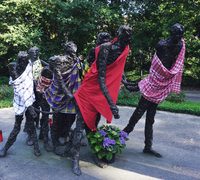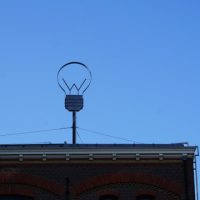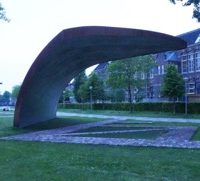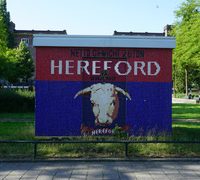Hortus Botanicus, 1638
Plantage Middenlaan 2a
In the second half of the seventeenth century the botanist and artist Agnes Block wrote: ‘Art and work are called for where nature fails’. Only in her skilful hands can nature bloom. She was the first to succeed in what many were attempting at the time: to cultivate the pineapple, imported from the colonies in the West, on European soil. The Dutch East India Company (VOC) started importing tropical plants and animals to the Netherlands in the seventeenth century. Many of them found their way to private collections, including the animals, until Artis Zoo was founded at the beginning of the nineteenth century. The plants cannot survive on their own in the changeable Dutch climate, but the wealth acquired through international trade led to technological progress and new ways of domesticating nature. The VOC encouraged research on flora with a view to the economic potential of new crops.
In 1682 the Amsterdam botanical garden was founded, initially to provide medicinal herbs during outbreaks of the plague. The VOC director and mayor of Amsterdam Johan Huydecoper was a member of the board. Greenhouses made it possible to simulate the original climate of the plants. The collection included the pineapple, an okra, a mulberry tree and two coffee plants. Cuttings were taken from both the coffee plants and the Asian mulberry tree and exported to Java and Surinam in the hope of creating a large-scale production of coffee and silk for the European market. The mulberry trees could not survive in the Surinamese climate, but coffee remained an enormously lucrative commodity for the Netherlands down to the end of the colonial era.
The economic value of natural products in the colonies whetted the appetite of traders ever since the overseas expeditions began. There was a demand for spices, fruits, textiles and raw materials on the European market, and their production was stepped up to meet that demand by violently exploiting the local labour force. Europe had little to offer in return, so monopolies of products were secured by foul means.
The economy and nature are inextricably intertwined. The twenty-first century once again confronts us with the problematic relation between them. In their modern form, the ideal of shaping the world as we choose and the consumerism that already played a part at the beginning of the colonial era have changed nature for ever and now pose a threat to human existence. This threat is unequally divided over the world. As a prosperous country, the Netherlands has the possibility of keeping the rising sea level outside the dykes and of developing technologies that limit the consequences of climate change as far as possible. Less well-to-do countries are faced with droughts and natural catastrophes without the resources to tackle them. The problem, however, is a global one. Fortunately, the Hortus Botanicus and the neighbouring Hermitage Museum have adopted a vanguard position in climate technology. Since 2016 the two institutes have been collaborating on the project Between Art and Greenhouse. The excess warmth generated by the Hermitage air conditioning system is pumped underground to the Hortus Botanicus to heat the greenhouses, making them dependent for eighty per cent on sustainable energy. It is the first time that this technique has been applied in the Netherlands.












